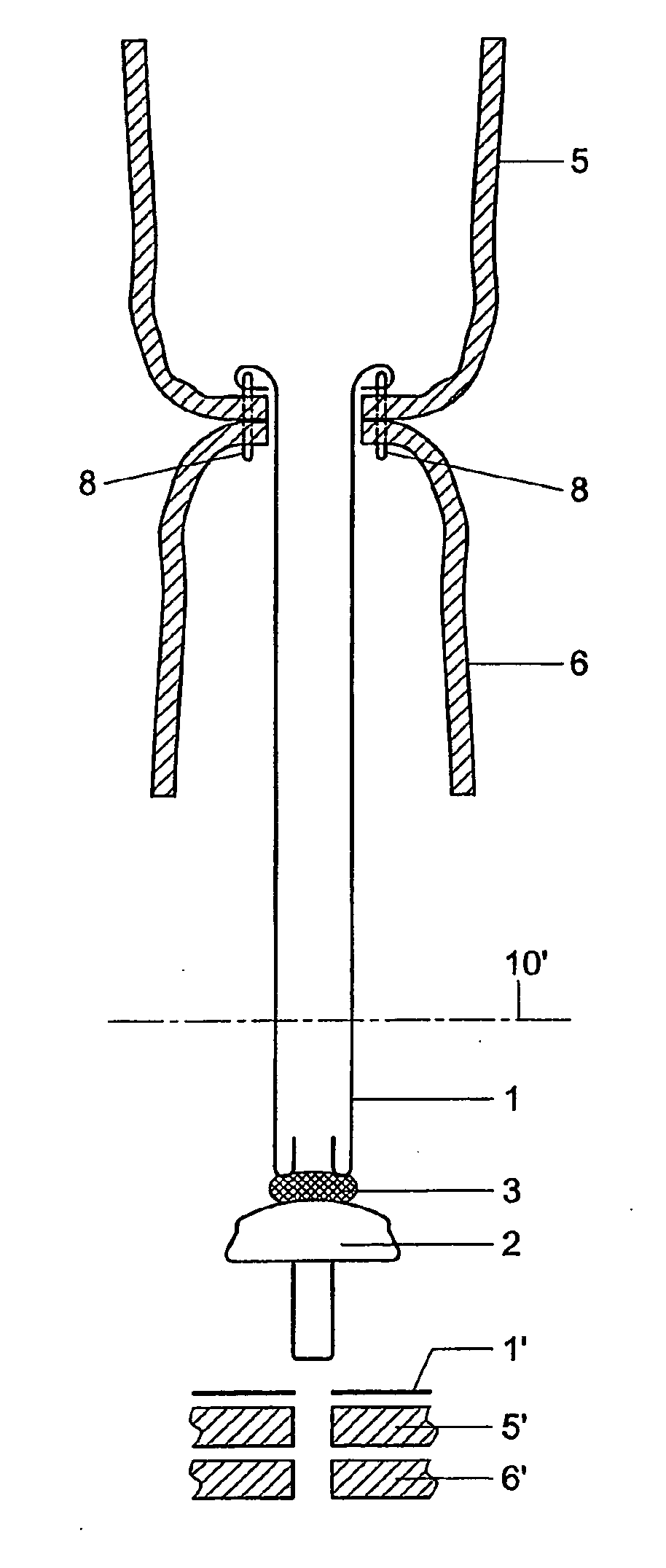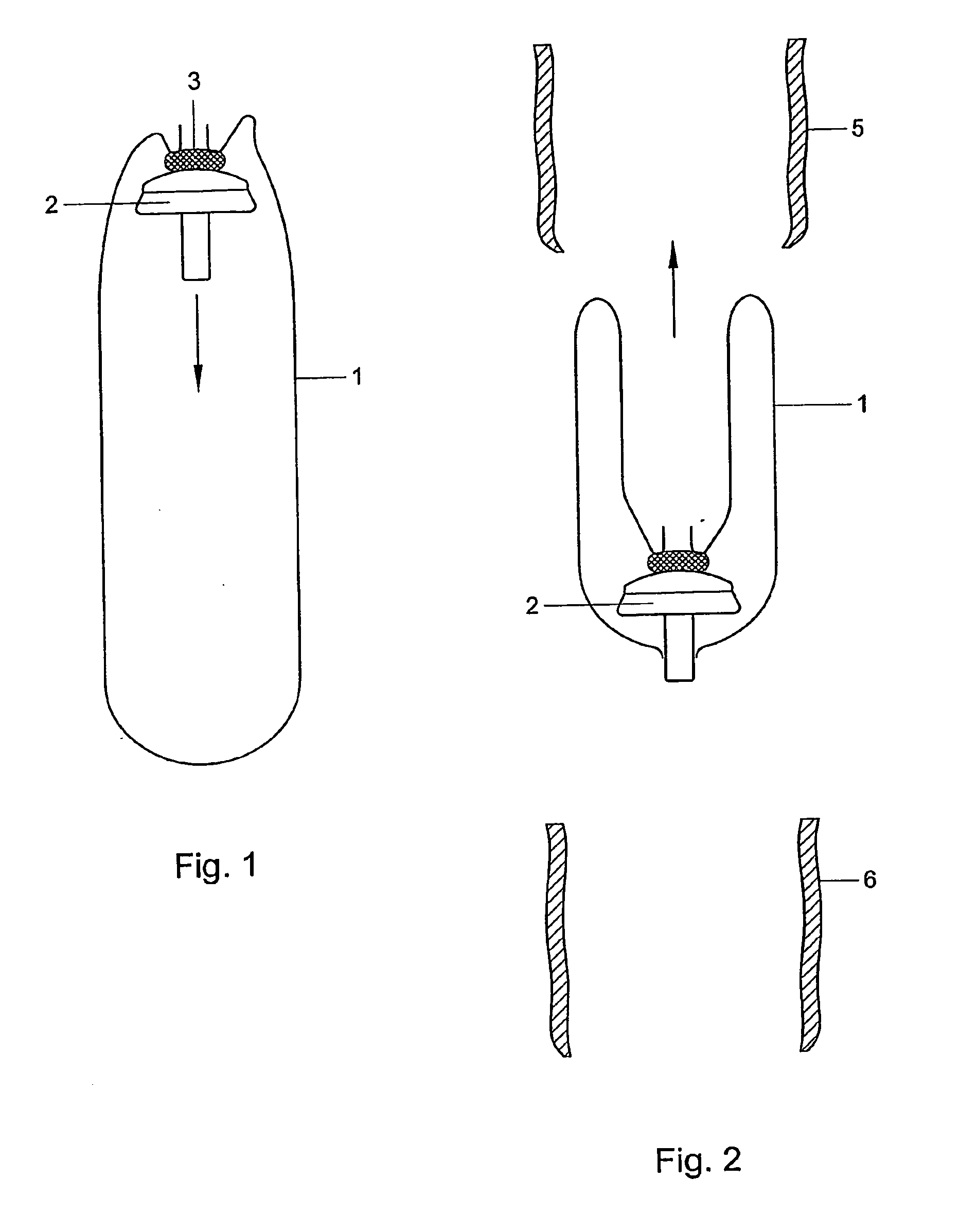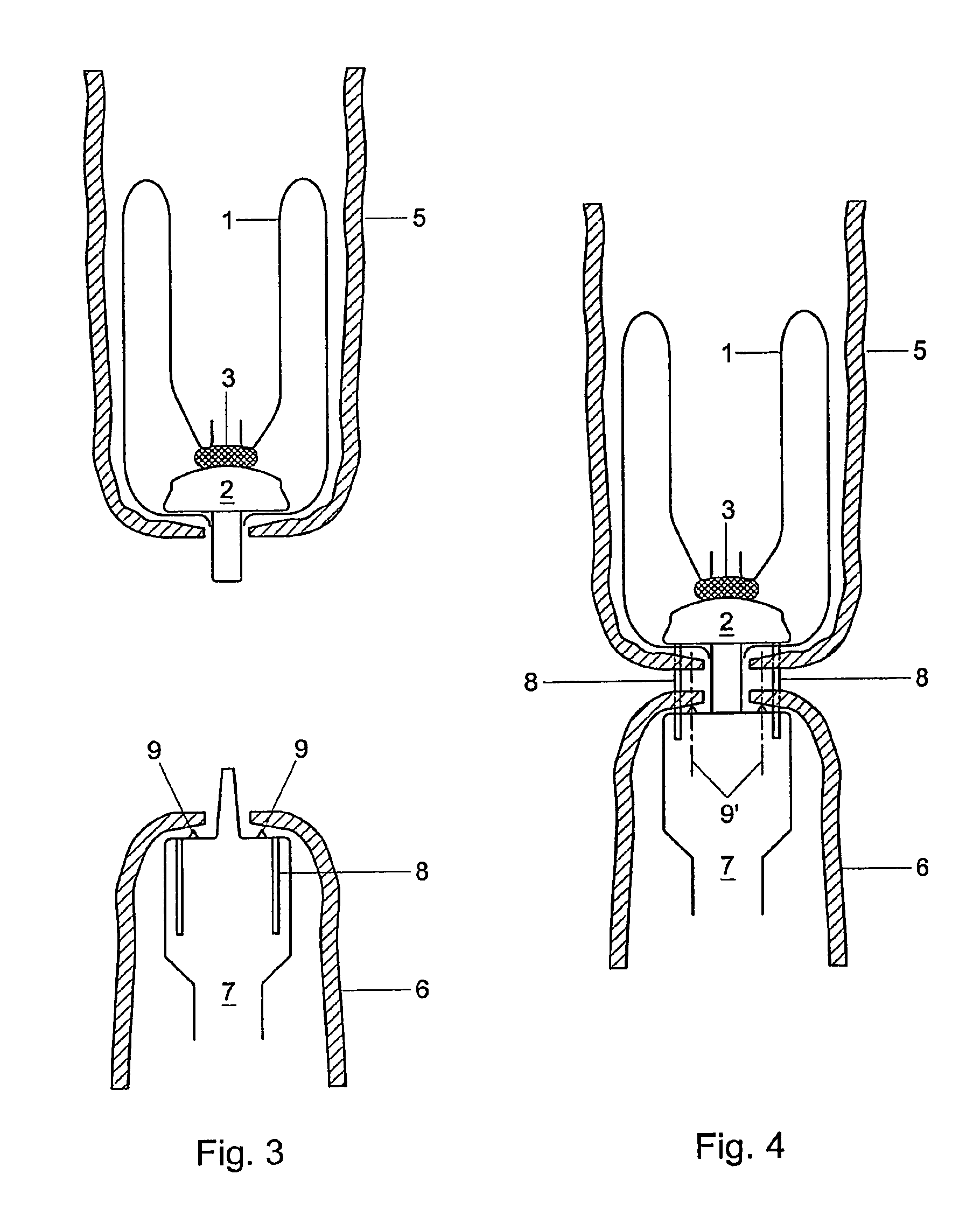Devices and methods for anastomosis
a technology of anastomosis and devices, applied in the field of medical devices, can solve the problems of proximal and particularly distal tissue being more vulnerable, accompanied by complications, and additional problems in anastomosis healing
- Summary
- Abstract
- Description
- Claims
- Application Information
AI Technical Summary
Benefits of technology
Problems solved by technology
Method used
Image
Examples
Embodiment Construction
[0017] In a first aspect, the present invention is directed to a medical device for the protection of an anastomosis, which device comprises a tubular shaped part which is made of a biocompatible, biodegradable polymer. The term “biodegradable” as used herein, means that the material decomposes or looses structural integrity under the conditions it is applied (i.e., in the body). It may thus fragment and leave the body via the natural pathway.
[0018] The device of the present invention is preferably in the shape of a condom, viz. having one open end and one closed end. Optionally, a small opening or perforation may be provided in the closed end of the condom of the present invention so as to facilitate the introduction of a stapling cap, as will explained in more detail hereinbelow.
[0019] It is a very important property of the devices of the present invention that composition of the biodegradable polymer can be chosen such that a desired and controllable fragmentation behavior, in ...
PUM
 Login to View More
Login to View More Abstract
Description
Claims
Application Information
 Login to View More
Login to View More - R&D
- Intellectual Property
- Life Sciences
- Materials
- Tech Scout
- Unparalleled Data Quality
- Higher Quality Content
- 60% Fewer Hallucinations
Browse by: Latest US Patents, China's latest patents, Technical Efficacy Thesaurus, Application Domain, Technology Topic, Popular Technical Reports.
© 2025 PatSnap. All rights reserved.Legal|Privacy policy|Modern Slavery Act Transparency Statement|Sitemap|About US| Contact US: help@patsnap.com



